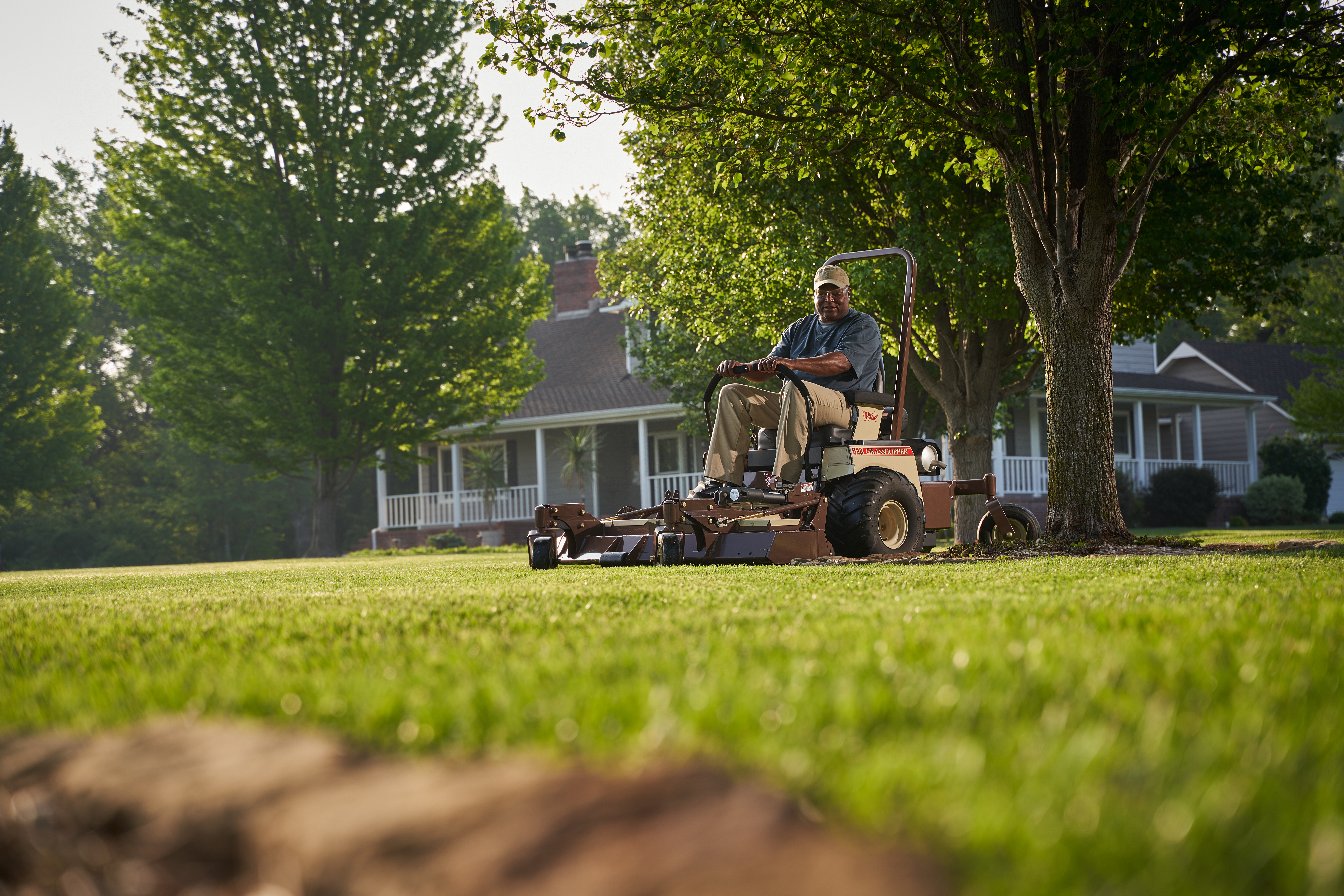A properly leveled deck provides several benefits. First and foremost, it helps produce the consistent cut Grasshopper mowers are known for. Secondly, a level deck helps reduce wear and tear on the mower’s blades, spindles, belts and engine. Thirdly, it helps ensure that the blades can efficiently chop the grass clippings, which helps optimize fuel efficiency.
If you’re noticing that things just aren’t looking as crisp and consistent after a crew has mowed, you might need to level the deck on the mower they’re using.
Check out the below step-by-step guide and demonstration video on how to level the deck on a Grasshopper Stand-On™ mower. If you’re looking to learn how to level the deck on a different style of Grasshopper mower, click on the below links:
How to level the deck on your MidMount™
How to level the deck on your FrontMount™
How to level an OutStander® Stand-On (SO37)
Step 1 – Park the mower on a hard, level surface. Remove the key and set the parking brake.
Step 2 – Check the tire pressure and adjust as necessary. Recommended PSI is noted on each tire’s rim. Also check the pressure in the front caster wheels. Recommended pressure is 12-15 PSI. Make sure both casters are identical and within this range.
Step 3 – Remove the side-discharge shield.
Step 4 – Set the deck to the mid-range of its cutting height.
Step 5 – Measure from the ground to the top of the deck shell on the operator’s left side. Repeat on the right side. Compare the two measurements to determine if an adjustment is needed to level the deck from side to side.
Step 6 – If a side-to-side adjustment is needed, locate where the rear of the deck attaches to the mower on both sides of the deck. Choose which side you want to make the adjustment to. Using a 5/8 wrench on the outside and an 11/16 on the inside, loosen the bolt on the suspension bracket (oriented horizontally). Then loosen the jam nut on the adjusting bolt (oriented vertically).
Step 7 – Loosen or tighten the adjusting bolt as needed. Note that tightening will lower the deck.
Step 8 – After making the necessary adjustments, measure from the ground to the top of the deck shell on both sides of the mower. Compare the two measurements to determine if any further adjustments are needed.
Step 9 – Once the two measurements are the same and the deck is level from side to side, retighten all fasteners you have loosened.
Step 10 – Complete the deck-leveling process by leveling the front-to-back pitch. At the front of the deck on the operator’s left side, measure from the ground to the top of the deck shell. Capture the same measurement at the rear of the deck. The front measurement should be 1/8” to 1/4" lower than the rear.
Step 11 – If a pitch adjustment is needed, locate the adjustment mechanisms on the front of the deck. There is one on each side, and both will need to be adjusted. Note that tightening the adjusting bolt will lower the deck.
Step 12 – After making adjustments on both sides of the deck, capture new measurements on both sides of the deck. Continue to adjust as necessary until you achieve that desired 1/8” to 1/4" pitch.
Step 13 – Once the desired front-to-back pitch is achieved, tighten all fasteners you have loosened.
Watch the above video for a detailed, step-by-step demonstration.
As you can see, leveling the deck on your Stand-On mower isn’t difficult at all. So the next time a freshly mowed lawn isn’t looking as clean and even as usual, follow this process to make sure everything is in the proper alignment, so your mowing crews can stay on the right track.

.jpg)


